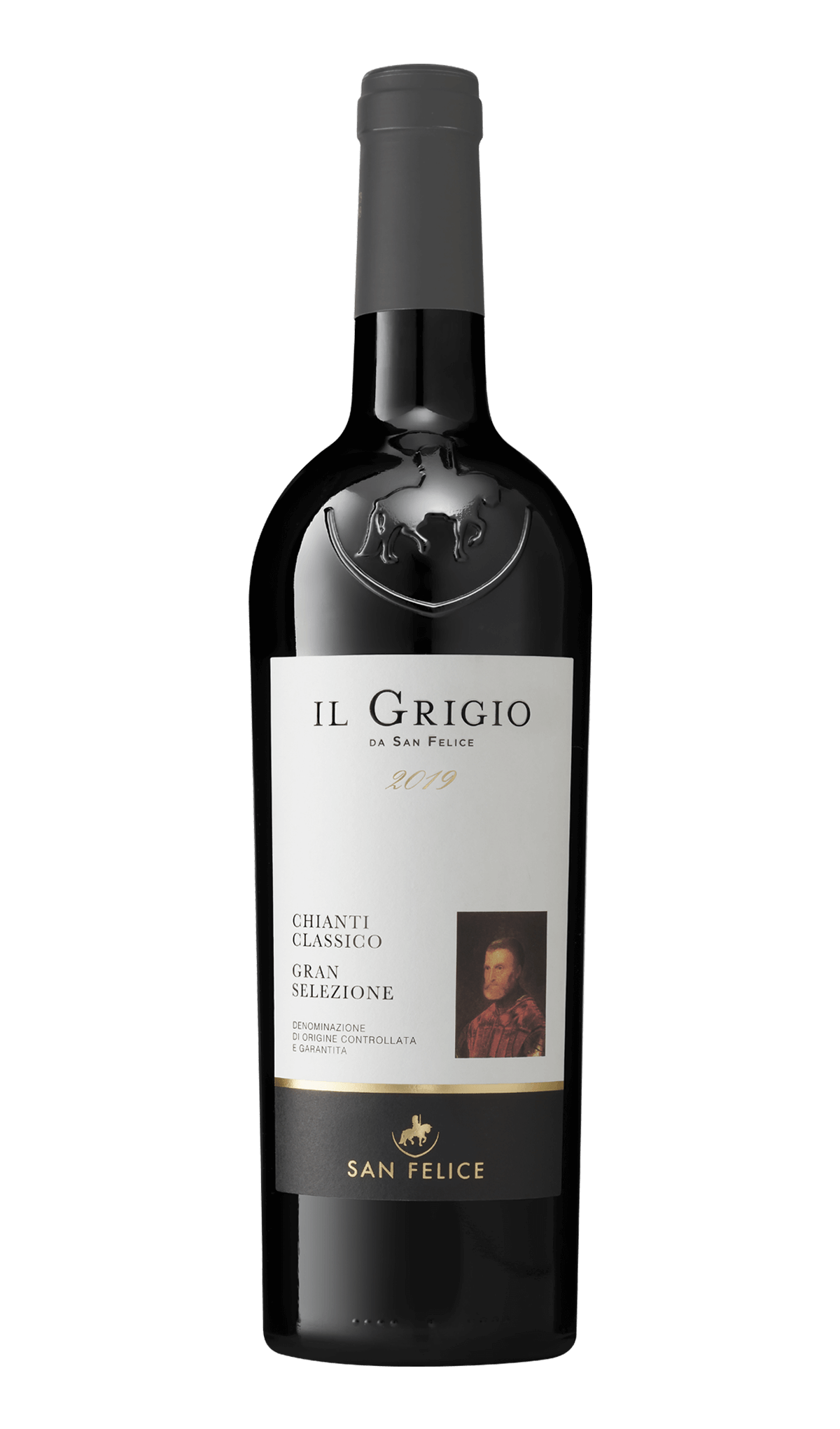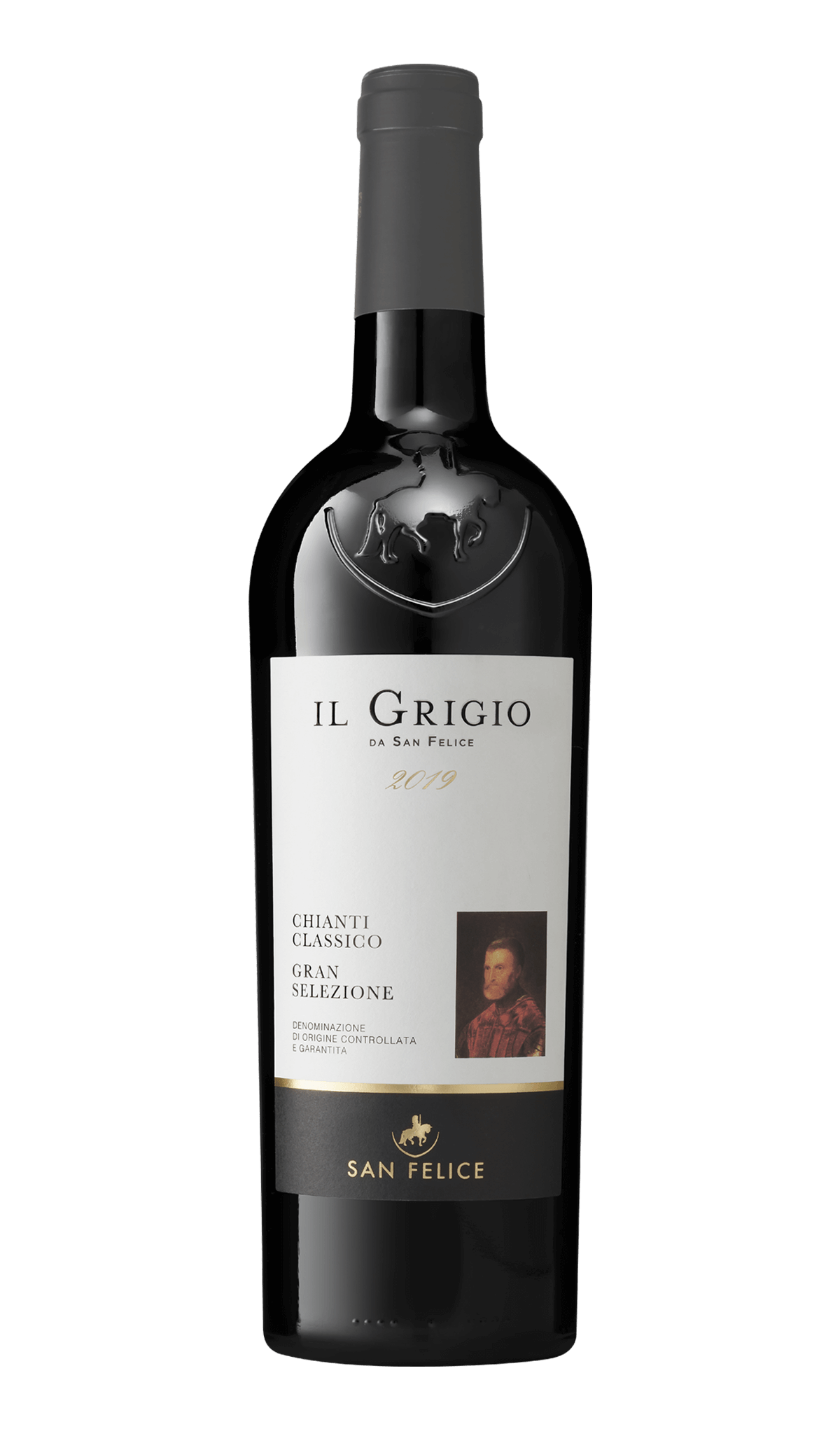1
/
of
1
- Home
- Wines: Sangiovese
- San Felice Il Grigio da San Felice Chianti Classico Gran Selezzione - 2017 (750ml)
San Felice Il Grigio da San Felice Chianti Classico Gran Selezzione - 2017 (750ml)
San Felice Il Grigio da San Felice Chianti Classico Gran Selezzione - 2017 (750ml)
Regular price
$44.99
Sale price
$44.99
Regular price
$49.99
Unit price
/
per
This generous red exhibits black cherry, plum, earth and tobacco flavors. Vibrant and solidly built, showing intensity and length on the fruit-, mineral- and spice-filled aftertaste, where dusty tannins leave their grip. Sangiovese, Pugnitello, Malvasia Nera, Ciliegiolo, Mazzese and Abrusco. Best from 2023 through 2038. 2,166 cases made, 800 cases imported. Bruce Sanderson
There were 26,000 bottles produced in the 2017 vintage composed of 80% Sangiovese enhanced by ancient indigenous Tuscan varieties including Abrusco, Pugnitello, Malvasia Nera, Ciliegiolo, and Mazzese.
Availability:
2 In Stock
$25 Shipping on Orders +$299
Couldn't load pickup availability
Share :

- varietal
- Region
- Sub - Region
- Type
- Reviews
By far the most significant variety in central Italy, it is the main grape in 25 of Tunscay’s 42 DOCs and also the backbone to the region’s most highly acclaimed wines. It’s capacity to adapt and evolve according to its suroundings is partly why it has acquired so many clones and synonyms. In Chianti Classico it is often referred to as "Sangioveto", while in the towns of Montalcino and Montepulicano (not related to the variety grown in Abruzzo) it goes by "Brunello" and "Prugnolo Gentile" respectively. Other synonyms include "Morellino" in southern Maremma, and "Nielluccio" in Corsica. With this in mind it is no surprise there is such variety in styles, varying from light young wines like Chianti Classico all the way through to gloriously rich and powerful Brunellos that can benefit from decade or more bottle maturation. Sangioveses that see little to no oak, typically show bright, tart red fruit of cherries and redcurrants while olives, herbs, and meat juices are noted in more savory examples. The grape’s acidity makes it a good accompaniment to food which is also high in acidity. Tomato based dishes and a great variety of Italian cuisine can pair incredibly well.
Tuscany is practically synonymous with Italian wine. Red wine, principally made from Sangiovese, accounts for most of the region’s production. Whether it’s a light Chianti, bold Brunello di Montalcino, or fruit-forward Super Tuscan there is a wine for just about everyone. Other sub-regions within Tuscany include Maremma, Bolgheri, and Rosso di Montalcino.
Chianti is the sub-region of Tuscany located between Florence to the north and Siena to the south. Wine made within the eight historical zones is labelled Chianti Classico and must be made with a minimum 80% Sangiovese and is often topped up with Canaiolo, Merlot, and Cabernet Sauvignon as well as two white grapes, Trebbiano and Malvasia. With its many small, picturesque rolling hills, aspect and soil types vary significantly, even within a single estate. Any wine made by a member of the Consorzio (wine-growers association) is bottled wearing the recognizable black rooster "Gallo Nero" seal around the neck of the bottle.
Red wine is wine made from dark-coloured grape varieties. The color of red differs based on the grapes variety or varieties used.Interestingly, black grapes yield a juice that is greenish-white. The actual red color comes from anthocyan pigments (also called anthocyanins) from the skin of the grape (exceptions are the relatively uncommon teinturier varieties, which produce a red colored juice). Most of the production centers around the extraction of color and flavor from the grape skin.


